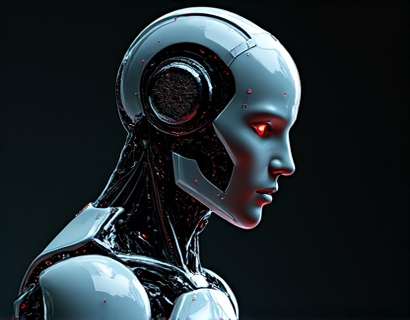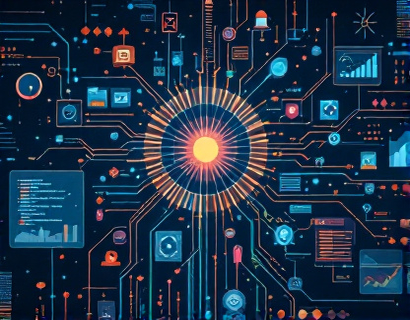Transforming Your Yoga Practice with AI Chat Interface: A Comprehensive Guide
The integration of artificial intelligence in various sectors has opened new avenues for personalized and efficient service delivery. The yoga industry, rich with ancient wisdom and modern adaptations, is no exception. An AI chat interface dedicated to yoga services and industry insights represents a groundbreaking approach to enhancing the yoga journey for enthusiasts and practitioners alike. This guide delves into how such a platform can revolutionize access to expert advice, industry trends, and personalized guidance, catering to all levels from beginners to advanced practitioners.
Understanding the Role of AI in Yoga
The fusion of AI technology with the practice of yoga aims to bridge the gap between traditional methods and modern innovations. An AI chat interface serves as a dynamic tool that can offer real-time, personalized advice based on user inputs, preferences, and progress. This technology leverages natural language processing and machine learning algorithms to understand and respond to user queries effectively. For yoga practitioners, this means having a constant source of expert guidance without the need for physical presence or scheduled sessions.
Personalized Yoga Guidance
One of the most significant advantages of an AI chat interface in yoga is the ability to provide personalized guidance. Each user's journey is unique, influenced by factors such as fitness level, health conditions, and personal goals. An AI system can assess these factors through initial queries and ongoing interactions, tailoring recommendations for poses, sequences, and practices that best suit individual needs. For beginners, this could mean starting with foundational poses and gradually advancing to more complex sequences, all guided by a system that adapts to their progress.
Assessment and Progress Tracking
The AI chat interface can also serve as a tool for self-assessment and progress tracking. Users can input their current abilities, goals, and any challenges they face. The AI can then create a customized plan, suggesting specific practices to address weaknesses and enhance strengths. Over time, as users progress, the AI can adjust the plan, offering new challenges and tracking improvements. This continuous feedback loop ensures that practitioners remain engaged and motivated, seeing tangible results in their yoga journey.
Expert Advice and Industry Insights
Beyond personalized guidance, an AI chat interface can provide access to expert advice and industry insights. Yoga, like any specialized field, benefits from the knowledge of experienced practitioners and industry leaders. Through the AI, users can gain insights into the history and philosophy of yoga, understand the science behind various poses, and learn about the latest trends and research in the field. This wealth of information empowers users to deepen their understanding and appreciation of yoga, fostering a more holistic practice.
Interviews and Articles from Experts
The AI can curate and present interviews, articles, and videos from renowned yoga instructors, researchers, and wellness experts. These resources can cover a wide range of topics, from the benefits of yoga for mental health to advanced alignment techniques. By providing direct access to expert opinions and research findings, the AI chat interface ensures that users are informed and inspired, enhancing their overall yoga experience.
Community and Support
Yoga is not just an individual practice but also a community-driven activity. An AI chat interface can facilitate the creation of a supportive community where users can connect, share experiences, and offer mutual encouragement. Through chat features, users can join groups based on shared interests or goals, participate in virtual classes, and engage in discussions led by experts. This sense of community can be particularly valuable for beginners who may feel isolated or unsure about their practice.
Virtual Classes and Workshops
The AI can also serve as a platform for virtual classes and workshops, offering users the flexibility to learn at their own pace and convenience. Instructors can conduct live sessions, and the AI can handle logistics such as scheduling, reminders, and feedback collection. For users who prefer structured learning, these virtual classes can provide a comprehensive and guided experience, complementing their self-paced practice.
Enhancing Yoga Accessibility
One of the most transformative aspects of an AI chat interface in yoga is its potential to make the practice more accessible. Geographical barriers, physical limitations, and time constraints can often hinder individuals from fully engaging with yoga. An AI-driven platform can overcome these challenges by offering on-demand content, adaptive practices, and personalized support. Whether a user is in a remote location or has mobility issues, the AI can tailor a yoga experience that is both effective and inclusive.
Cost-Effective Solutions
Traditional yoga classes and private sessions can be costly, making the practice less accessible to many. An AI chat interface can provide cost-effective solutions by offering free resources, subscription-based models, and pay-per-session options. This flexibility ensures that yoga is accessible to a broader audience, regardless of financial constraints. Additionally, the AI can help users find local studios or instructors based on their budget and preferences, further enhancing accessibility.
Addressing Common Concerns and Myths
Despite its numerous benefits, yoga faces several misconceptions and concerns that can deter potential practitioners. An AI chat interface can play a crucial role in addressing these issues by providing accurate information and dispelling myths. For instance, the AI can clarify that yoga is not just about physical postures but also encompasses breath control, meditation, and ethical living. By offering evidence-based responses and expert insights, the AI can help build confidence and trust in the practice.
Safety and Injury Prevention
Injury prevention is a significant concern for yoga practitioners, especially those new to the practice. The AI can provide guidelines on proper alignment, modification techniques, and when to seek professional guidance. By emphasizing safety and offering tailored advice, the AI helps users avoid common injuries and ensures a healthier practice. This proactive approach can significantly enhance user satisfaction and retention.
Continuous Learning and Adaptation
The beauty of an AI chat interface lies in its ability to continuously learn and adapt based on user interactions. As users engage with the platform, the AI gathers data on preferences, progress, and feedback. This information is used to refine and improve the AI's responses, making the guidance more accurate and relevant over time. For the yoga community, this means a constantly evolving resource that stays ahead of industry trends and user needs.
Integration with Wearable Technology
To further enhance the yoga experience, the AI chat interface can integrate with wearable technology such as fitness trackers and smartwatches. This integration allows for real-time monitoring of vital signs, activity levels, and even stress levels. The AI can then use this data to adjust yoga recommendations, suggesting practices that complement the user's current physical and mental state. This holistic approach ensures that yoga is not just a physical practice but also a tool for overall well-being.
Challenges and Considerations
While the potential benefits of an AI chat interface in yoga are substantial, there are also challenges and considerations to address. Ensuring the accuracy and reliability of the AI's advice is paramount. This requires rigorous testing, continuous updates, and collaboration with yoga experts to validate the content. Additionally, privacy and data security must be prioritized to protect user information.
Expert Collaboration
To maintain the highest standards of guidance, the AI should be developed in collaboration with certified yoga instructors, physiotherapists, and wellness experts. These professionals can provide the necessary expertise to ensure that the AI's recommendations are safe, effective, and aligned with best practices in yoga and wellness. Regular reviews and updates by these experts will help keep the platform current and trustworthy.
Conclusion
The integration of AI chat technology in the yoga industry represents a significant leap forward in how individuals access and engage with yoga services and knowledge. By offering personalized guidance, expert insights, and a supportive community, an AI chat interface can transform the yoga journey for practitioners of all levels. As this technology continues to evolve, it has the potential to make yoga more accessible, effective, and enjoyable, fostering a deeper connection between individuals and the practice.











































